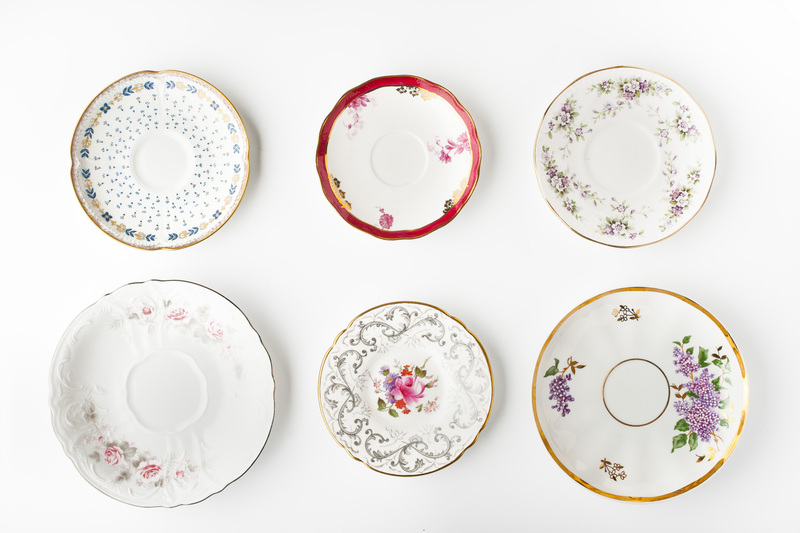A Guide to Giving Your Used Cookware a Second Life
Is your kitchen cluttered with old pans, scratched pots, or mismatched lids? Don't toss them in the trash just yet! Giving your used cookware a second life is a sustainable, creative, and rewarding practice that helps both your home and the environment. This comprehensive guide will show you unique ways to repurpose, recycle, and donate your preloved kitchenware, ensuring every pot and pan gets the recognition it deserves.
Why Should You Repurpose Old Cookware?
Millions of tons of household goods end up in landfills each year, and cookware is a significant contributor. By reusing or repurposing old cooking utensils, you support environmental preservation, reduce waste, and possibly inspire your own creativity. Here are some key benefits of giving used cookware a second life:
- Sustainability: Minimizes landfill waste and resource consumption.
- Cost-Efficiency: Saves money compared to buying new decor or garden tools.
- Creativity: Offers a creative outlet through upcycling and DIY projects.
- Charity: Many organizations benefit from donated kitchen essentials.
- Personal Satisfaction: It feels good to find a new purpose for something old!

Assessing Your Old Cookware
Before transforming that battered saucepan, take time to inspect your kitchenware. Not all items are equally suitable for donation, upcycling, or recycling. Consider these factors when giving your pre-owned cookware a second life:
- Material: Stainless steel, cast iron, copper, and aluminum are all recyclable, but nonstick coatings may not be.
- Condition: Cracked, warped, or extremely damaged items may be unsafe for reuse.
- Cleanliness: Remove food residue, rust, or burnt-on stains before gifting or recycling.
- Safety: If nonstick coatings are peeling or pots are heavily dented, consider upcycling rather than donating for kitchen use.
Eco-Friendly Ways to Give Used Cookware New Life
Whether you've got an old frying pan or a mismatched lid, there are eco-conscious ways to extend its usability. Here are practical and innovative ideas to guide you:
1. Donate Your Old Cookware
Many charities and shelters welcome gently used pots, pans, and utensils. Consider the following options:
- Thrift Stores: Organizations like Goodwill or Salvation Army often accept working cookware for resale.
- Homeless Shelters: Shelters and food banks frequently need kitchen tools for meal preparation.
- Community Kitchens: Local soup kitchens may appreciate extra pans and cooking implements.
- Online Giveaways: Use platforms like Freecycle, Facebook Marketplace, or Buy Nothing groups to connect directly with neighbors in need.
2. Recycle Unusable Cookware Responsibly
If your cookware is too damaged for reuse, recycling is the next best option. Recycling metal conserves valuable natural resources, so consider these steps:
-
Local Scrap Yards:
- Cast iron, stainless steel, and aluminum pans are typically accepted at scrap metal facilities.
- Remove any non-metal components like plastic or rubber handles first.
-
Municipal Recycling Programs:
- Contact your city's waste management service to ask about cookware recycling guidelines.
- Some programs accept metal pots and pans in curbside recycling, while others require drop-offs.
Note: *Nonstick-coated cookware may not be recyclable everywhere. Always double-check local rules or search for specialty recycling programs.*
3. Upcycle Cookware into Home Decor
Unleash your inner artist by transforming old pots and pans into stylish and functional home decor. Here are creative upcycling ideas:
- Wall Clocks: Turn a frying pan into a quirky kitchen clock by adding a clock mechanism and decorating the surface.
- Planters: Repurpose saucepans, teapots, or colanders as indoor or outdoor planters. Add drainage holes, fill with soil, and plant your favorite herbs or flowers.
- Organizers: Attach small pans or muffin tins to walls or inside cabinets for unique storage for keys, craft supplies, or bathroom essentials.
- Light Fixtures: Create an industrial-chic pendant lamp by rewiring a metal colander or pot.
- Serving Trays: Large baking sheets or pans can be painted or adorned with handles for use as rustic serving trays or lap desks.
- Decorative Centerpieces: Group various sizes and shapes of aged cookware for a country-inspired table centerpiece, especially for parties or special gatherings.
Get the family involved! *Upcycling is a fantastic project for adults and kids alike. Not only do you save cookware from landfills, but you also add a unique touch to your living space.*
4. Repurpose Cookware for Outdoor Use
Your old kitchen pots and pans can serve new roles outdoors:
- Bird Feeders: Hang a shallow pan or teapot filled with seed from tree branches to attract local birds.
- Garden Tools: Use large, worn-out pans as scoops for potting soil, or convert long-handled pots into watering devices.
- Tool Organizers: Secure colanders or saucepans to a garden shed wall using brackets, then store handheld tools or seed packets inside.
5. Use Worn Cookware for Arts & Crafts
Pots and pans offer sturdy bases for all kinds of crafts:
- Candle Molds: Old loaf pans or muffin tins can be reused to mold homemade candles or soap.
- Paint Palettes: Muffin tins and small saucepans make excellent paint palettes for children and adults alike.
- Stamping Tools: Use the textured bottoms of certain pans in stamping and printmaking projects.
How to Prepare Used Cookware for Its Second Life
Preparation is essential to ensure your cookware is safe and aesthetically pleasing for reuse or repurposing. Here's a quick checklist:
- Thoroughly clean: Remove all food residue, burnt bits, and stains.
- Remove rust: Use a mixture of baking soda and vinegar to gently scrub away rust on cast iron or steel.
- Disinfect: Soak pans in a mixture of water and white vinegar for sanitization, especially if giving away or using for crafts.
- Polish or repaint: Metal paints and non-toxic sealants can refresh the look of pans used for decor.
- Remove handles or plastic: If recycling, disassemble your cookware to separate materials.
Important Safety Tips for Repurposing Cookware
- Avoid using damaged nonstick pans for food: If the coating is peeling, repurpose for non-food functions only.
- Never use unknown metal cookware for eating or drinking: Some old or decorative items may leach metals unsafe for food.
- Handle sharp edges: Smooth or sand rough or sharp areas before upcycling.
- Use food-safe paints and sealants: If painting cookware for serving, make sure all finishes are food-grade.
Creative Inspiration: Real-Life Upcycling Success Stories
For further motivation, here are a few real-life examples of people transforming used kitchenware:
- Vintage Teapot Planter Wall: A homeowner turned a collection of chipped teapots into a whimsical vertical garden on their patio.
- Cake Pan Shadow Box: An artist transformed a deep cake pan into a shadow box for displaying keepsakes.
- Colander Hanging Lamp: A DIYer rewired an old metal colander as a dazzling kitchen pendant light.
- Children's Backyard Drum Set: One family used old saucepans and lids to build an outdoor percussion set for their kids.
Your Roadmap: How to Start Giving Used Cookware a Second Life
Ready to make a positive impact while decluttering your kitchen? Here's a step-by-step plan to revive your old pots and pans:
- Sort: Gather all unwanted or damaged cookware and separate them by material and condition.
- Research: Look up local charity requirements or recycling options for your area. Some cities have specific drop-off points for metals.
- Prepare: Clean, disinfect, and disassemble items as needed.
- Decide: Choose your method: donation, recycling, upcycling, or repurposing.
- Act: Deliver items to the proper place or gather supplies for your upcycling project. Get creative and involve your friends or family!
The Environmental Impact of Giving Kitchenware a Second Life
Every time you rescue a pan from the landfill, you make a tangible difference. Repurposing and recycling cookware helps reduce landfill overflow, lowers demand for raw materials, and cuts greenhouse gas emissions tied to manufacturing new goods.
A single aluminum pan takes hundreds of years to decompose in a landfill, but recycled, it can be reborn as new products in just months. Multiply this by the number of homes worldwide, and the impact is immense.
Frequently Asked Questions About Reusing Old Cookware
Can nonstick pans be recycled?
Most curbside recycling programs don't take nonstick pans due to their coating, but local scrap metal recyclers sometimes accept them if the coating is removed. Always check first!
Is it safe to use old cookware for food?
Yes, if the cookware is undamaged, rust-free, and without flaking or peeling coatings. When in doubt, opt to reuse old kitchenware for crafts or gardening instead.
What if my cookware is a family heirloom?
Consider professional restoration, or display it as vintage kitchen art rather than using it for cooking, especially for antique pieces.

Conclusion: Embrace Sustainable Living by Giving Cookware a New Purpose
Giving your old cookware a second life is a rewarding and eco-friendly way to declutter, create, and contribute positively to your local community and planet. Whether you choose to donate, recycle, upcycle, or repurpose your used pots and pans, you're embracing a mindful habit that leads to lasting benefits.
So the next time you find a scratched skillet or a lonely pot lid, remember this guide! Start your journey toward sustainable living and creativity--one pan at a time.